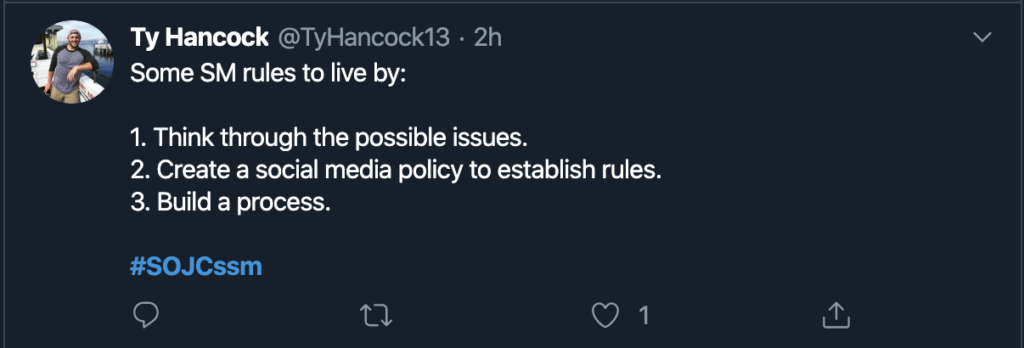By: Mary Edman, Ty Hancock, Brandon Yee & Katie Zurbrick
Today during class we discussed social media ethics and the secret to social media success. The biggest way to succeed in usage of social media is to have the users trust.

Topics we discussed throughout class:
- The difference between honesty and sleazery
- Ghost-blogging
- Astroturfing
- Poor Taste Social Media
- Honesty ROI
There is a thin line between honesty and being sleazy and brands really try to ride that thin line for as long as they possible can without crossing it. The goal for a brand is to be clever enough to get people thinking but not too far that suddenly your brand reputation is sleazy.

Ghost-blogging is when someone in your communications or marketing department runs your social media pages for an executive or someone in your office. During class we talked about the good ways to handle this and the ways to make sure that your fans do not think your fake. The biggest takeaway was transparency. It is important for those departments to let followers know that they are ghost-tweeting/blogging/posting. You don’t want to fake it and have someone find out later down the road and blow your cover. Some examples of good protocol to ghost-tweeting that were given during class were to put somewhere in the bio that the account is run by a different person or the example was given of the Obama’s account having a notation on tweets that signified that they were not written directly by him. Also discussed was the importance of maintaining one voice throughout the posts. A student brought up the idea of having meetings beforehand to lay out how the social media was going to look so that the superior could give approval or denial. The instructor talked about her own experience with ghost-blogging with someone and when you work with someone long enough you pick up their voice and it becomes easier.
Astroturfing is when people who have stakes in a company leaving 5-star reviews on it so that people buy into the success. During class we talked about two big campaigns that focused on this issue. The first was Amazon’s campaign where boxes ended up on people’s front steps so that the seller can pose as a verified purchaser (using your stolen name, address and phone number) and place 5-star reviews on their product. Not only is this a horrible thing for Amazon to allow but it is also very dangerous for the person who receives a package because your information has been compromised. The second campaign focused on how an Instagram page was supposed to be highlighting alcoholism but instead looked like an influencer page as she was holding alcohol in every picture. Prior to class, we prepped the in-class discussion by posting the article and discussed the opinion below:

The final ethical issue discussed in class was the issue of poor taste.

Brands need to make sure to ask themselves what the worst that could happen before moving forward with a campaign. A couple of campaign disasters were discussed during class
- DiGiorno’s #WhyIStayed
- Prince
It is important for brand’s to research a hashtag before they decide to use it otherwise they could make a mistake like DiGiorno and use a hashtag that stands with domestic violence and backfired on them greatly. The Prince example discussed had some good examples and some bad examples. Chevy handled his death well as they used a connector with their brand and a song he had sang before posting while Cheerio handled it poorly by putting a Cheerio where the dot on the “I” should be showing promotion of brand more than grieving the moment.

It is important as social media managers to make sure to follow some social media rules provided below. No one wants to end up in the middle of a scandal having to rebound a brand back from an ethical disaster.



